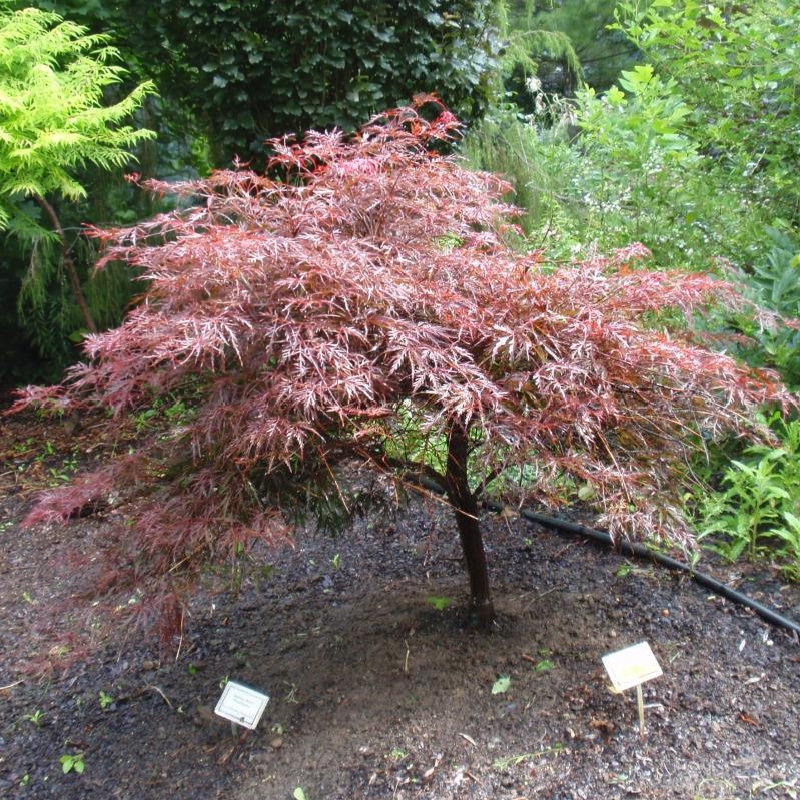

Note that when grown in a container, it may not perform exactly as indicated on the tag - this is to be expected. Each palmate green leaf (2-5' long) has 5 to 7 but less frequently 9 toothed lobes. General plant form is rounded to broad-rounded, often with low branching. It is even sizeable enough that it can be grown alone in a suitable container. Acer palmatum, commonly called Japanese Maple, is a deciduous shrub or small tree that typically grows to 10-25' (infrequently to 40') tall.

Because of its height, it is often used as a 'thriller' in the 'spiller-thriller-filler' container combination plant it near the center of the pot, surrounded by smaller plants and those that spill over the edges. Tamukeyama Japanese Maple is a fine choice for the yard, but it is also a good selection for planting in outdoor pots and containers. This is a selected variety of a species not originally from North America. Consider applying a thick mulch around the root zone in winter to protect it in exposed locations or colder microclimates. It is somewhat tolerant of urban pollution, and will benefit from being planted in a relatively sheltered location.

It is not particular as to soil pH, but grows best in rich soils. It prefers to grow in average to moist conditions, and shouldn't be allowed to dry out.
TAMUKEYAMA JAPANESE MAPLE SUN FULL
This tree does best in full sun to partial shade. It grows at a slow rate, and under ideal conditions can be expected to live for 80 years or more. It tends to be a little leggy, with a typical clearance of 3 feet from the ground, and is suitable for planting under power lines. Tamukeyama Japanese Maple will grow to be about 7 feet tall at maturity, with a spread of 10 feet. Tamukeyama is a red-leaf, dissected (cutleaf/laceleaf) cultivar that grows in a mound or dome to 6-8 tall spreading by weeping and cascading branching to 12. Tamukeyama Japanese Maple is recommended for the following landscape applications Īccent, Mass Planting, Hedges/Screening, General Garden Use, Container Planting It has no significant negative characteristics. This is a relatively low maintenance tree, and should only be pruned in summer after the leaves have fully developed, as it may 'bleed' sap if pruned in late winter or early spring. It lends an extremely fine and delicate texture to the landscape composition which can make it a great accent feature on this basis alone. Tamukeyama Japanese Maple is an open deciduous tree with a strong central leader and a more or less rounded form. The rough gray bark and red branches add an interesting dimension to the landscape. First, it usually reaches no more than 6-8 feet in height while it can reach 10-15 feet wide. Its special value is that it has a very interesting growth habit. It produces red samaras from early to mid fall. Inaba Shidare is a unique Japanese maple that can be grown in full sun in zones 5-9. It features subtle corymbs of red flowers rising above the foliage in mid spring before the leaves. The deeply cut ferny palmate leaves are highly ornamental and turn an outstanding red in the fall. Tamukeyama Japanese Maple has attractive burgundy foliage which emerges crimson in spring.


 0 kommentar(er)
0 kommentar(er)
